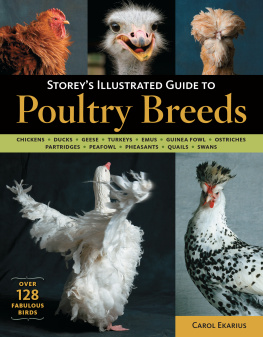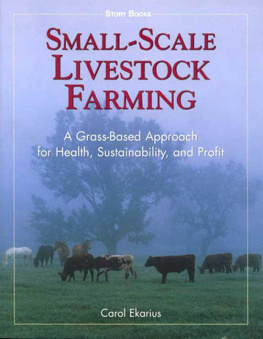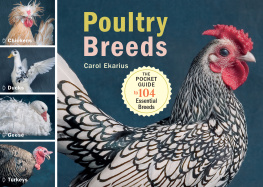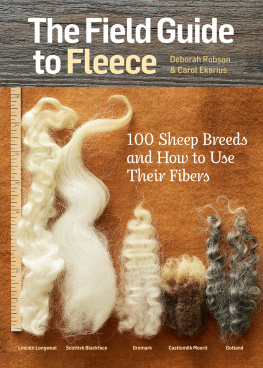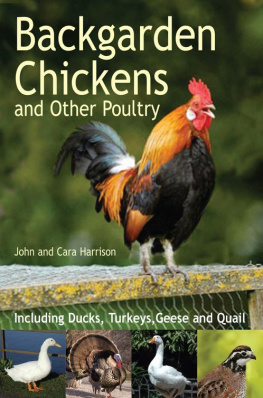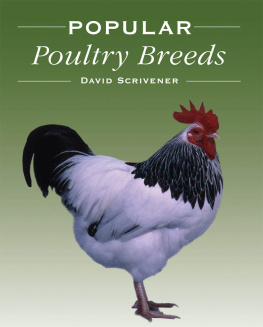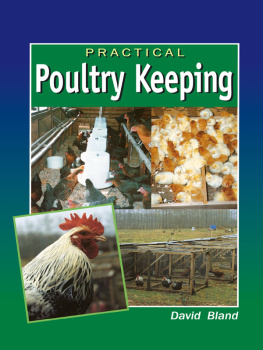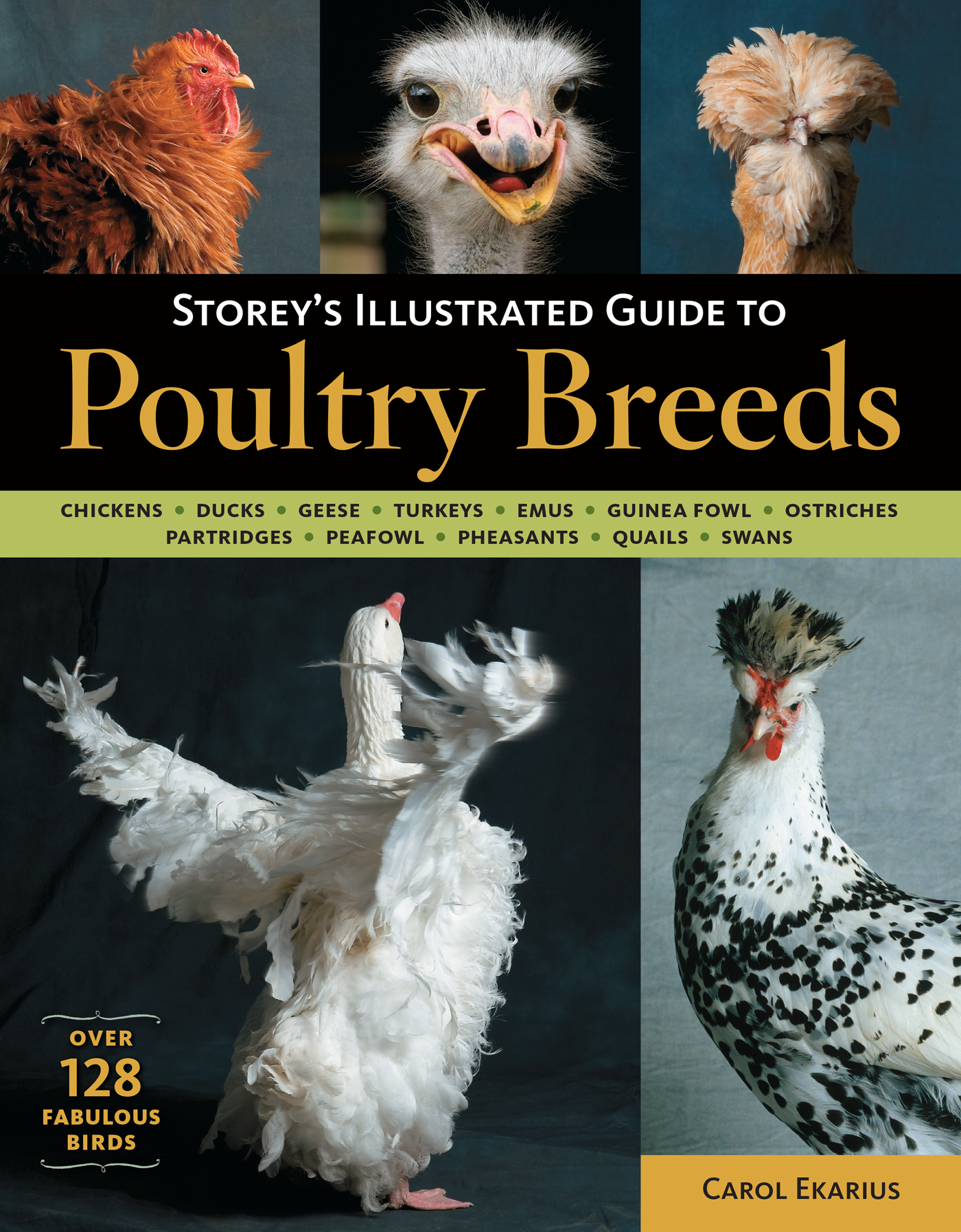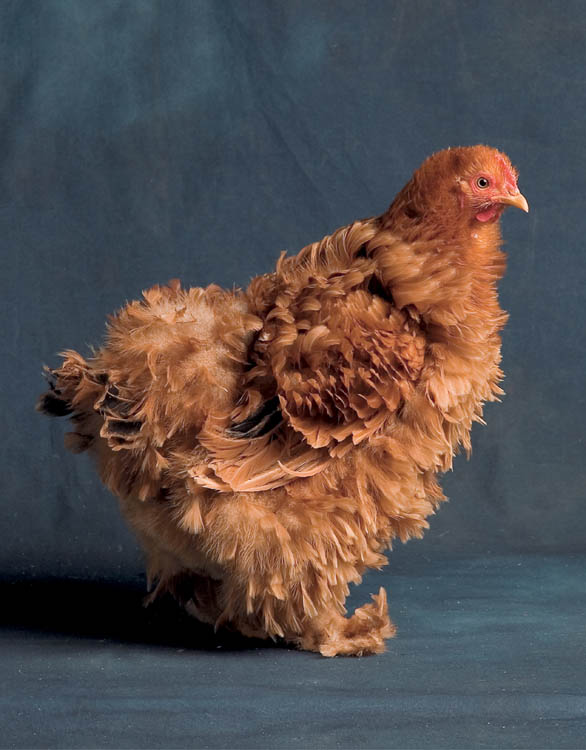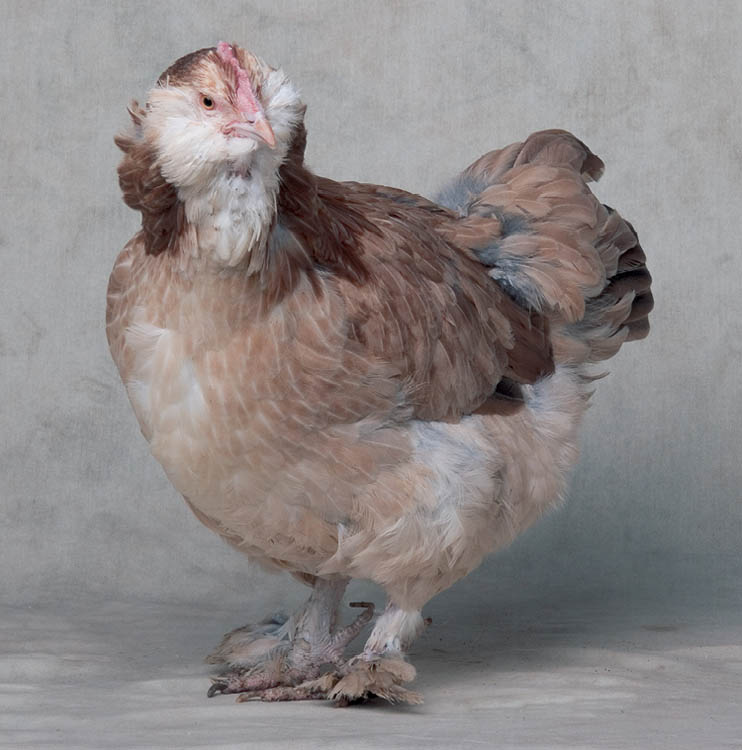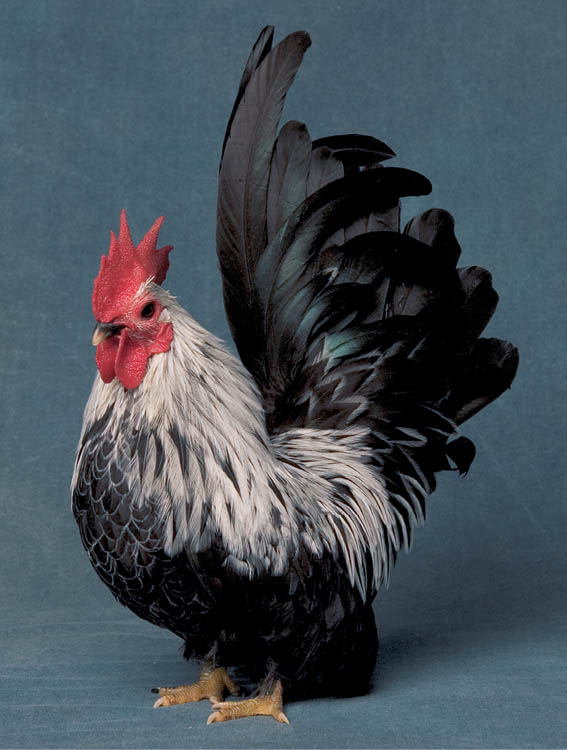Dedication
To my mom, Barbara Ekarius, for encouraging me to love words, to love books, and to pursue dreams.
Contents
Acknowledgments
Books are the work of many people, and this one is no exception. In fact, by its very nature, this book has benefited more from the recommendations and expertise of others than my other books. Thanks to everyone who helped, including:
- The staff at the American Livestock Breeds Conservancy, in particular Dr. Don Bixby, Don Schrider, and Marjorie Bender, for writing about the need to protect breeds and for reviewing text.
- Glenn and Linda Drowns, who have personally worked to protect so many breeds at Sandhill Preservation, for reviewing text, and for working with us to schedule a photo shoot, so we could capture many of the rare breeds on film at one time.
- George Allen, editor of Game Bird Gazette, for reviewing the Other Birds of Interest chapter.
- Matt Ranson, Barbara Green, Mary Keyes, Dr. Antonio Alcalde (Catholic University of Chile), Dr. Elizabeth Reitz (University of Georgia), Dr. Michael Romanov (San Diego Zoo), and Dr. Carl Johannessen (University of Oregon), for assisting me with information about the Araucana.
- Dr. Jerry Dodgson (Michigan State University), for answering questions about the Araucanas, genetics, and the Poultry Genome Project and for reviewing text.
- Dr. Wesley Towers (retired, Delaware State Veterinarian) for information on the Blue Hen of Delaware.
- Dr. David Mindell (University of Michigan), for helping me understand turkey evolution.
- August Vinhage, for explaining some of the differences between the APA Standard of Perfection and the ABA Bantam Standard.
- John Henderson, a reference librarian at Ithaca College and chicken fancier at Sage Hen Farm, and Margaret Shephard, technical editor at the Ecological Society of America, for providing information on beak color.
- Craig Russell, of the Society for the Preservation of Poultry Antiquities, for his research and for filling in some holes for me, as well as Christine Heinrichs, also of SPPA, for her invaluable assistance helping us locate breeders of rare breeds.
- Kent Whealy at the Seed Savers Exchange, for supplying information on the Iowa Blue.
- David Holderread for reviewing the text in the Waterfowl chapter.
- More than one hundred individual breeders affiliated with the APA, the ABA, and breed clubs, who graciously responded to questions, pointed me to another breeder/expert, or reviewed the text for the breed they work closely with.
- Adam Mastoon, for supplying the beautiful photos that help bring this book and the birds in it to life, and all the breeders who either shared their birds with our photographers or their photographs with us (see for a complete list of breeders and photographers).
- Monika Stout and Vicky Vaughn Shea for creating a beautiful design.
- Deborah Burns, Sarah Guare, Ilona Sherratt, and the rest of the Storey team, for helping make this project happen.
Preface
I still remember our first chickens. It was the early 1980s, and we had just moved to a place in the country 40 acres outside Kremmling, Colorado. We immediately began acquiring critters. First came a couple of horses, then a calf, then some rabbits. We planned on ordering chicks as soon as the weather warmed up.
At the time I ran the wastewater treatment plant in Frisco, Colorado, and in that capacity had dealings with the local businesspeople. One day I was telling one of the businessmen about our new place. He lit up immediately.
Carol, have I got a deal for you, he said with a big grin. He had gotten eight chicks for his children at Easter. His wife and kids had brooded them under a heat lamp in their basement, and now the chicks were getting large and feathering out. They were making a mess in the basement, and he really didnt want to build a pen in his backyard for them. You can have them for free, with the food, the feeders, the waterer everything. The only catch is that you have to let me bring the kids out to see them once, so they know their chickens went to a good home. After that, theyre yours... if you want to eat them thats okay.
Since they were layers, those chickens had a long life; they were the beginning of an almost full-time pursuit (save a short birdless period during one of our cross-country moves) that has lasted more than two decades. Our flocks have ranged in size from just a handful of birds in a backyard pen to hundreds of birds on a commercial farm. Weve also had turkeys, ducks, and geese.
Those first chickens were just a commercial Leghorn strain. Since then, our birds have represented a variety of breeds, each with its own strengths and weaknesses. There is no perfect breed, but there is an amazing array of breeds that have real value for enthusiasts. We have enjoyed all of our birds. Their antics, their beauty, and the good food they provide more than compensate us for the time and expense of keeping them. I hope this book will help you, too, appreciate what the barnyard and backyard birds have to offer.
Carol Ekarius
Introduction
Farmers who have had no experience with the different varieties of purebred fowls are very apt to choose a breed because they like the looks of the fowls, or because somebody says that particular breed is the best, but it frequently happens that their poultry fails to pay, because the breed selected is not the one best adapted to the special purpose for which they keep fowls, and disappointment results.
Waldo F. Brown, The Peoples Farm & Stock Cyclopedia, 1884
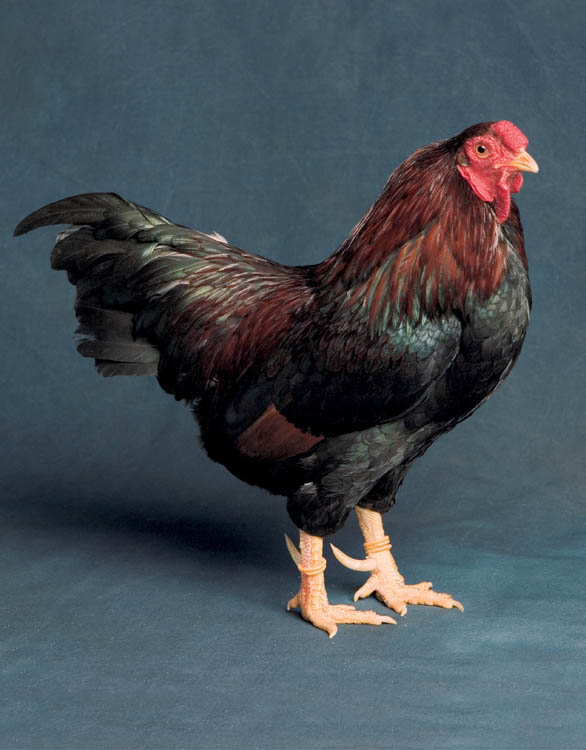
Partridge Chantecler bantam.
Humans have depended on domesticated and captive-bred wild birds for thousands of years. These fowl have both fed us and provided us with feathers for uses ranging from strictly ornamental to highly practical (such as goose down insulation). They have played a spiritual role for many cultures and attracted us with their beauty and interesting character.
Our need (both utilitarian and aesthetic) for fowl has resulted in an amazing variety of barnyard birds. There are over a dozen species, hundreds of breeds, and thousands of varieties kept in barnyards and backyards around the country and around the world.
Let this book serve as your guide to the marvelous selection of birds that are kept by farmers and fanciers in North America. This first chapter provides some general background information on the birds of the barn. Next comes a chapter dedicated to chickens (by far the largest group of domesticated birds), followed by chapters on turkeys, waterfowl, and finally some of the other birds that farmers and fanciers raise (such as the upland game birds).

